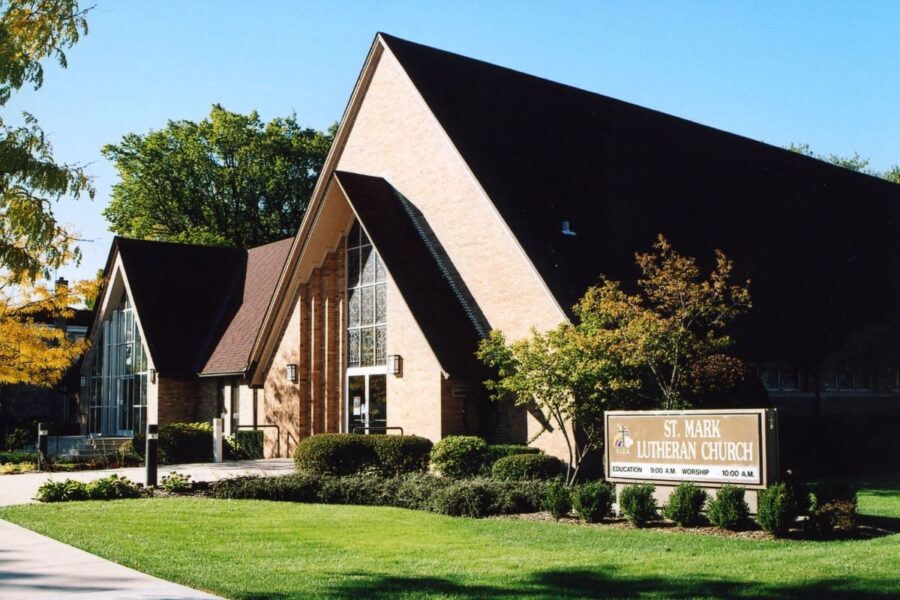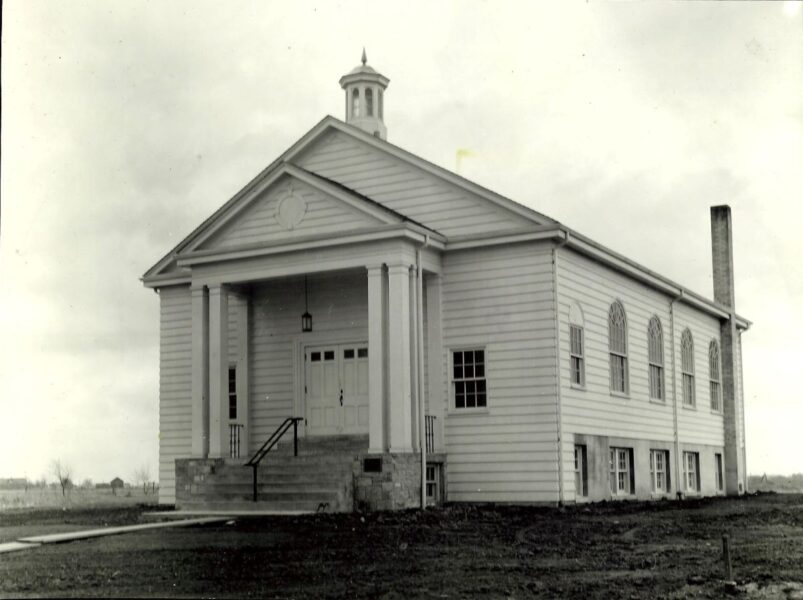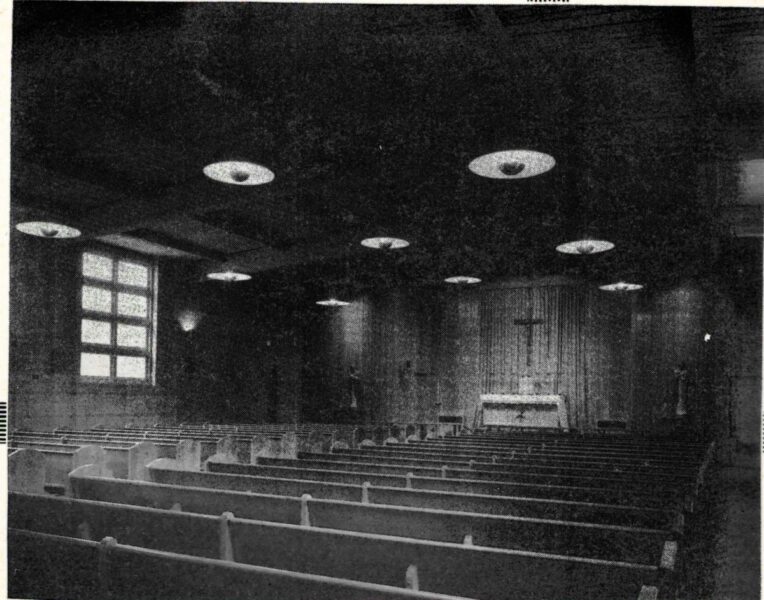Does MPHS have photographs: Yes
Address: 605 West Golf Road
Is building standing: yes
What is at site: a church
When was business founded: May 18, 1958
Is business still operating: yes
Who owned business:
Interesting stories, facts, history:
Up until 1957, there were no Methodist churches in Mount Prospect. Motivated by a desire for a Methodist church, nine Mount Prospect residents met with the District Superintendent Rev. Dr. Birger Dahl and Rev. Richard Mellor to begin planning a church on November 24, 1957. On February 16, 1958, the first Vesper service was held. A morning worship service soon followed on Palm Sunday, 1958. Trinity’s name was chosen on March 2, 1958. The Trinity congregation was formally organized at a special service on May 18, 1958. Eighty-eight members representing about 35 families were a part of this service at the newly formed Trinity United Methodist Church in Mount Prospect. Donald Thomas was appointed as Trinity’s first pastor.
However, there was no permanent place for the congregation to meet. The congregation had been meeting at various homes, the Village Hall and Lincoln School. After much discussion with church officials, 605 West Golf Road was chosen as the permanent location for the church. The church property was purchased from Frederick and Julia Larson for $37,000 on July 29, 1958. A house on the property was used as the first parsonage.
Construction of the church started November 2, 1959, although plans had been drawn up since the spring. The cornerstone was laid on May 15, 1960 and the church was essentially complete in late August. The church has had many renovations and additions since then to account for a growing congregation. The latest one was in 2002 to convert the original sanctuary into four multipurpose meeting rooms with other miscellaneous renovations.
Events of Importance
There were two instances of disaster in church history. One instance was when the boiler on the second floor of the education wing exploded on the morning of February 20, 1979. Thankfully no one was hurt, but if it had exploded later, there would have been some injuries. The damage was covered by insurance and everything was rebuilt for $313,000. The second disaster was when a micro burst or a tornado hit the church on August 23, 2007. The roof of the entire education wing was torn off. Office personnel inside the church went to the basement when the tornado sirens sounded so no one was hurt. All damage was covered by insurance.
Faith and Service
Trinity United Methodist Church offers numerous ways to get involved with the church family and Mount Prospect community. Trinity offers or has offered in the past, vacation Bible schools, Christmas pageants, Lent and Easter services, Sunday school classes, youth programs, Saturday evening praise services, retreats, praycations, ESL classes, and Hispanic and Korean ministries. Trinity provides facilities for two Korean Methodist churches, the Northwest United Church in the 1980s and the Sam Mool Methodist Church in the present. Trinity also offers a Prayer Ground where children can learn Christian values while attending Sunday service with their families.
Trinity also offers outreach ministries. Trinity has missionaries in Africa that they regular give support to. Trinity participates in ministries such as Habitats for Humanities, Night Ministry, PADS, Feed My Starving Children, blood donor programs and much more.
Church Trivia
The church sits on land that was once a part of a farm owned by August Froemling, one of the original German settlers of Mount Prospect. When the church land was purchased, it included a 2-story frame house, a barn and a garage. The house was used as the original parsonage, the barn was removed in 1960, and the garage was moved to the east side of the parking lot in 1960 to make room for the new sanctuary addition. The barn burned in 1973 and was demolished by church members. The existing garage at the southeast corner was built that fall.
Trinity’s original sanctuary was in what is now called Trinity Hall. At the west end of the sanctuary, there was a wooden cross, altar, choir area and pulpit. Everyone sat on metal folding chairs that are still used today on many occasions. To save money, the building was largely finished by church volunteers who did the painting, laid the floor tiles and installed an acoustical ceiling in Fellowship Hall downstairs. Light fixtures came from a vacated Woolworth building.
Trinity grew almost exponentially in the first 12 years of its existence, reaching over 1,000 members by early 1972, with the Sunday services averaging nearly 500 attendees. Anticipating that the church would remain that size, or continue its growth pattern, the current sanctuary was planned and built to seat 500 guests.
The stained glass windows in the sanctuary were designed, fabricated and installed under the direction of Mr. Crosby Willett of Willett Studios from Philadelphia.
The original plans for the sanctuary included a new fellowship hall and kitchen where the courtyard is today. Lack of funds forced that part of the plan to be deferred though it is still discussed from time to time.
The present Wicks pipe organ in the sanctuary was purchased and installed in 1987. A large percentage of the organ’s pipes are located behind the northwest wall of the sanctuary.
A new parsonage was kindly offered by Mr. and Mrs. A.D. Rose who were retiring to Florida in the early 60s. The church bought the house for $60,000 and Pastor Dotson and his family moved in in August 1965. The old parsonage was sold in July 1996 and was moved to Belmont and Noyes Street in Arlington Heights, where it still stands to this day. The parsonage was updated around 2017/2018 so the new pastor Wendy Hardin Hermann could move in.
Trinity was the first choice for the name of the new church with the second choice being Calvary.
At the first meeting of the church on November 24, 1957, it was agreed that 10% of the offerings of the new church would go to benevolences to be determined at a later date. The first offering was $7.00.
More information can be found on Trinity’s website here.
(Information kindly provided by church historian Jere Teed)





